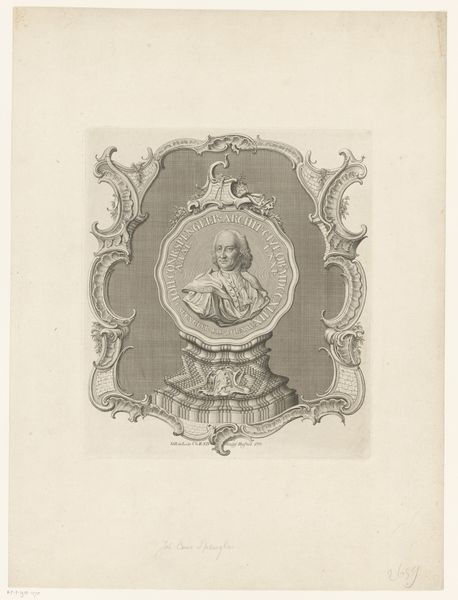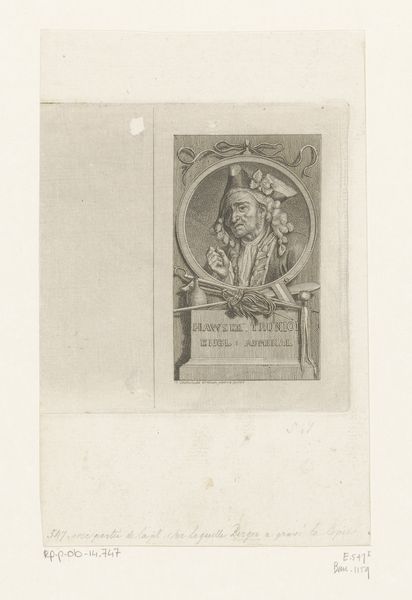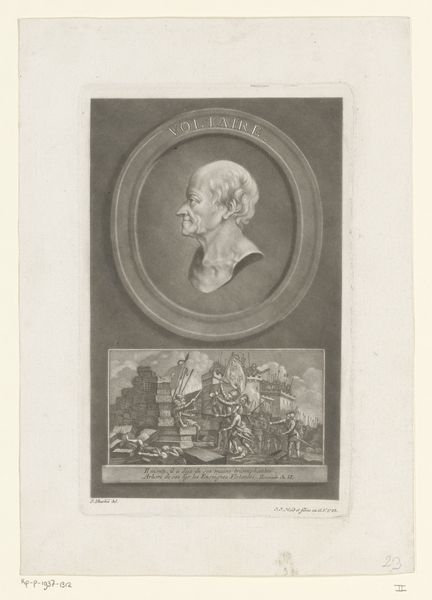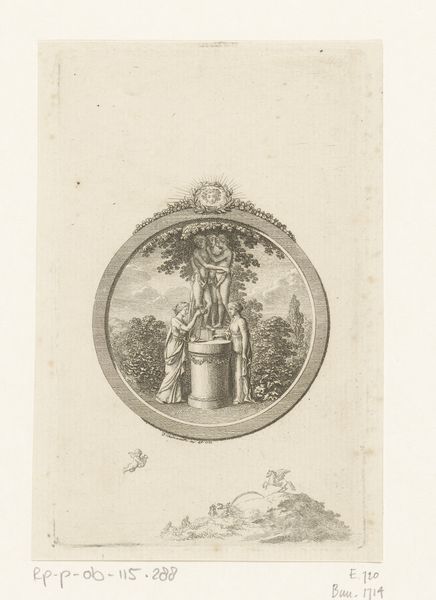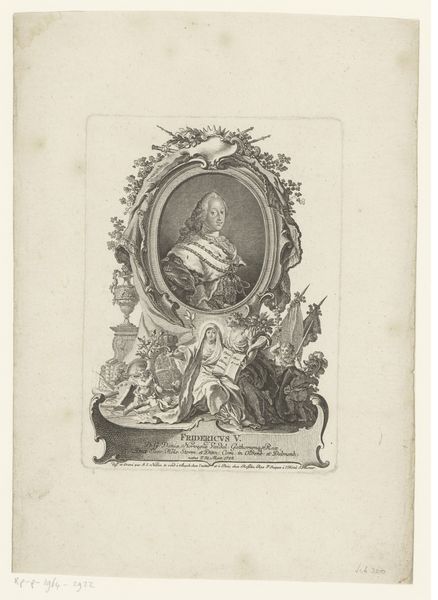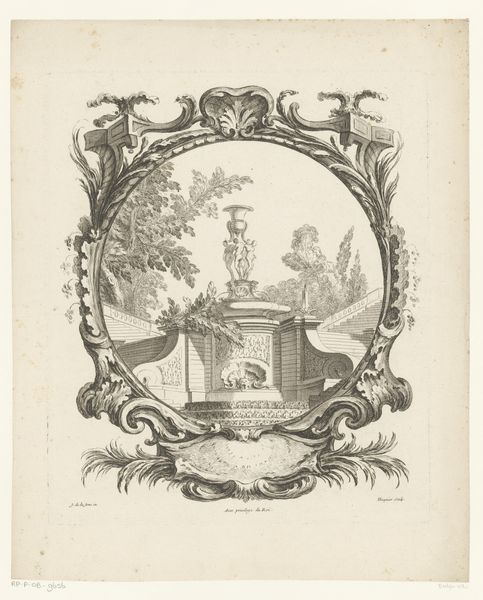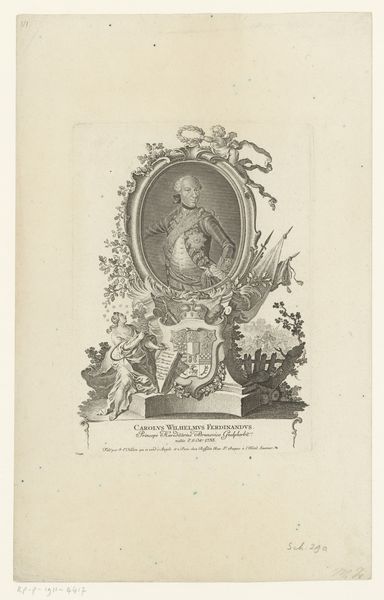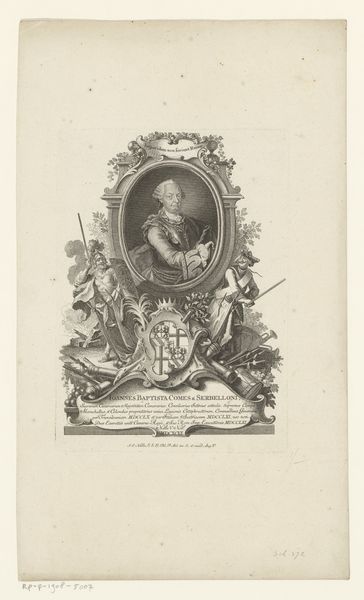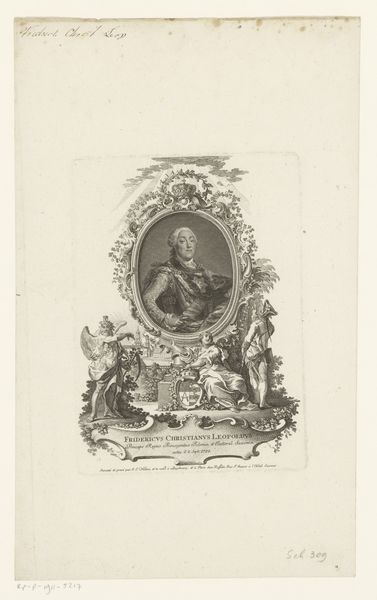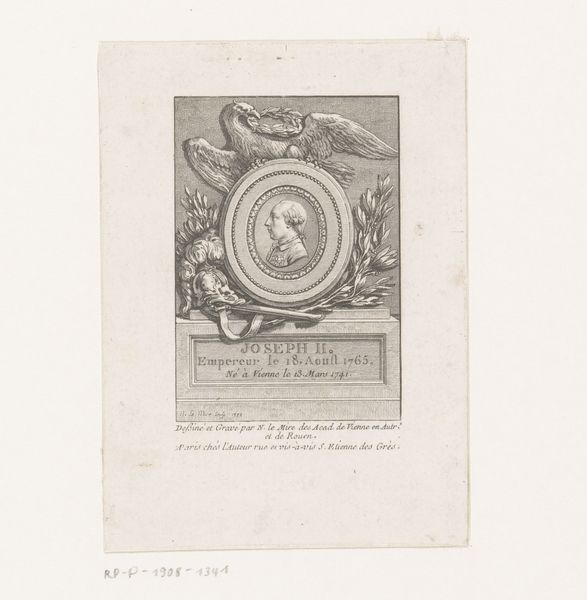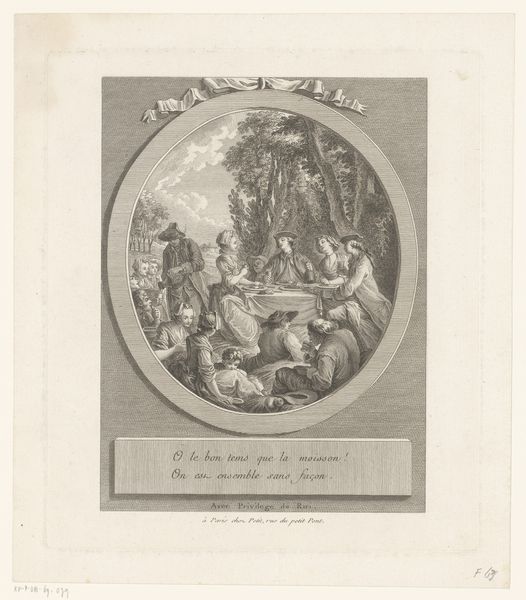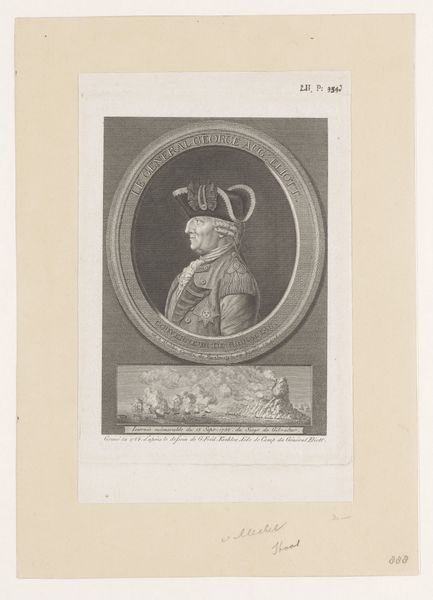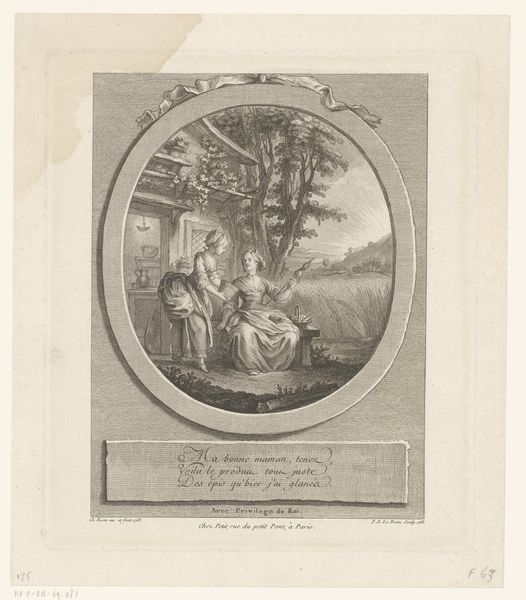
Landschap met het portret van Jean-Benjamin de La Borde in een medaillon 1774
0:00
0:00
engraving
#
portrait
#
neoclacissism
#
old engraving style
#
15_18th-century
#
engraving
Dimensions: height 233 mm, width 154 mm
Copyright: Rijks Museum: Open Domain
Curator: So, this is “Landscape with the Portrait of Jean-Benjamin de La Borde in a Medallion,” an engraving by Louis Joseph Masquelier, dating back to 1774. Editor: It's interesting how the portrait is set within this landscape—almost like nature is embracing the sitter. What do you see in this piece beyond the visual composition? Curator: This is more than just a pretty picture; it's a statement about power, class, and representation during the Enlightenment. How does the portrait's setting influence how we see Jean-Benjamin de La Borde, not just as an individual, but as a figure of authority? The engraving coincides with Neoclassical ideals and portrays La Borde as both a member of aristocracy as well as appealing to the bourgeoise class due to the landscape and the reference to nature surrounding the engraving.. Editor: It almost seems to me like the landscape and frame could represent liberty while trapping the aristocrat in a cage. Are there more theories of such that exist? Curator: That's insightful! Some historians see this as a direct reflection of the anxieties amongst both royalty as well as commoners. In fact, we see an attempt from the upper classes to co-opt imagery from revolutionary thinkers as a sign of placating those thoughts. You know, this was right before the French Revolution. Editor: This really illuminates how art from this period can give us insights on these critical intersections between art, politics, and society. I’m glad to view it with these socio-political layers in mind. Curator: Absolutely. Understanding the context unlocks a deeper engagement with the artwork. Editor: Thank you, I can view the work in a much more comprehensive perspective now. Curator: My pleasure. Art is in constant dialogue with the society and environment that surrounds it.
Comments
No comments
Be the first to comment and join the conversation on the ultimate creative platform.
